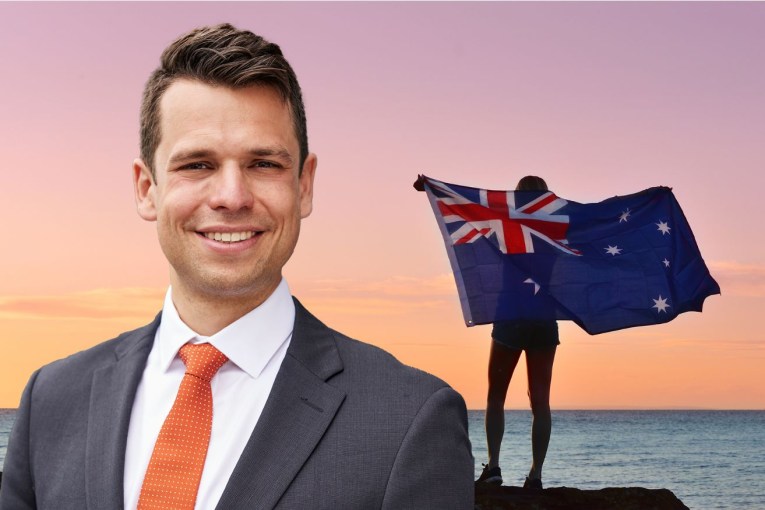Paul Bongiorno: This constitutional process is deeply flawed, divisive and anachronistic

Perhaps because referendums are held so infrequently, we haven’t bothered to notice how flawed they are as a democratic process, which goes a long way to explain why only eight have succeeded of the 44 proposed since 1901.
They are a vestige of the struggle to get the six colonies to agree to form a federated commonwealth based on the principle all states are equal, no matter how many people actually live in them.
It is states’ rights versus people’s rights and as the years have gone by this construct has created two classes of Australian citizen – the very thing the No campaign urges us not to do on October 14.
When Australia’s 17.5 million enrolled voters go to the ballot box, almost 500,000 of them will be stripped of a full franchise.
The power of the vote of citizens in the Australian Capital Territory and the Northern Territory will be halved.
It will count in the popular vote but not in the state tally: Remember for a referendum to succeed it needs a double majority in the popular vote and in four of the six states.
At federation a capital territory was merely a thought bubble – required but not yet realised for another 26 years – and the Northern Territory was part of South Australia until 1911.
In 1977, the Fraser Coalition government with the support of the Whitlam-Labor opposition managed to convince an overwhelming majority in the popular vote and all the states to allow Territorians to participate in referendums, but they did not address the right to a full franchise.
Disenfranchisement
Former Liberal ACT chief minister Kate Carnell – a leading Liberals for Yes campaigner – is just as exercised at the disenfranchisement of Territorians in the Senate.
Canberra, with a population just under 500,000, has just two three-year term senators compared to Tasmania with just over 500,000 citizens which has 12 six-year term senators.
At least the discrimination in the Senate can be simply addressed by a vote of the federal Parliament, which Carnell thinks is long overdue.
Bringing our anachronistic constitutional arrangements more in line with contemporary democratic sentiment would require a referendum to do it – think about that.
The manipulation and fear mongering to defeat it hardly bears contemplating.
But not all such opportunism benefits the longer-term political interests of the perpetrators.
In the 1951 referendum proposed by the Menzies-Coalition government to allow it to outlaw Communists and Communism, the vote in the states was a dead heat – three all – meaning it was defeated.
Labor’s leader, former High Court judge and a leading actor in the formation of the United Nations after the war, Herbert Vere (Doc) Evatt, opposed the proposal as laying the groundwork for anti-democratic dictatorships.
Menzies had the support of all Australia’s major newspapers except the now defunct Argus in Melbourne.
The zeitgeist at the time was Cold War anti-Communist paranoia, fed by the Soviet Union’s virtual takeover of Eastern Europe and the powerful control of Communists in key unions.
The popular vote was the slimmest of margins for No – 50.56 per cent.

The No campaign, led by Peter Dutton, is enjoying the fact that it is easier to block change than make it, writes Paul Bongiorno.
Gun loaded against change
This referendum went a long way to establish the mythology for a referendum to succeed it must have bipartisan support, but it is always easier for the No side to succeed because the gun is so loaded against change.
Evatt, however, had something of a pyrrhic victory.
His Labor Party split over Communist influence in its affiliated unions and Menzies was able to paint him as a fellow traveller, especially after Russian spy Vladimir Petrov helpfully linked Labor figures to Moscow.
In this historical precedent there is a clear lesson for Peter Dutton.
Dutton’s vehement opposition to recognition of First Peoples in the Constitution via a Voice to Parliament irrevocably brands him as an heir to the old colonial order denying the very existence of a people who had been dispossessed in the founding document of the new commonwealth.
It could have been otherwise, but the easier political path is to leverage the fundamentally flawed and tainted referendum process to score a cheap political win over the Labor Prime Minister who accepted Indigenous leaders’ invitation to do so.
Sow doubt and confusion
The recipe for success is to sow doubt and confusion and grasp any argument that will work with voters without the need for coherence or consistency.
How else to explain the extraordinary performances we have seen from leading Coalition No campaigners Jacinta Nampijinpa Price and Nyunggai Warren Mundine?
Though at the weekend Mundine split with Price and Dutton by supporting treaties to address this injustice and wanting to change the date of Australia Day.
Mundine made the extraordinary claim that treaties were more likely to follow a No result “because on 15 October if it’s No, that’s when the real work starts”.
Main problem with that is Mundine’s side is not in government and even the one state Liberal government in the country supports the Yes case, not to mention Dutton promising he would never agree to treaties.
Reforming this flawed referendum process is a conversation the nation needs to have before we embark on anything else to do with the Constitution.
Paul Bongiorno AM is a veteran of the Canberra Press Gallery, with more than 40 years’ experience covering Australian politics








